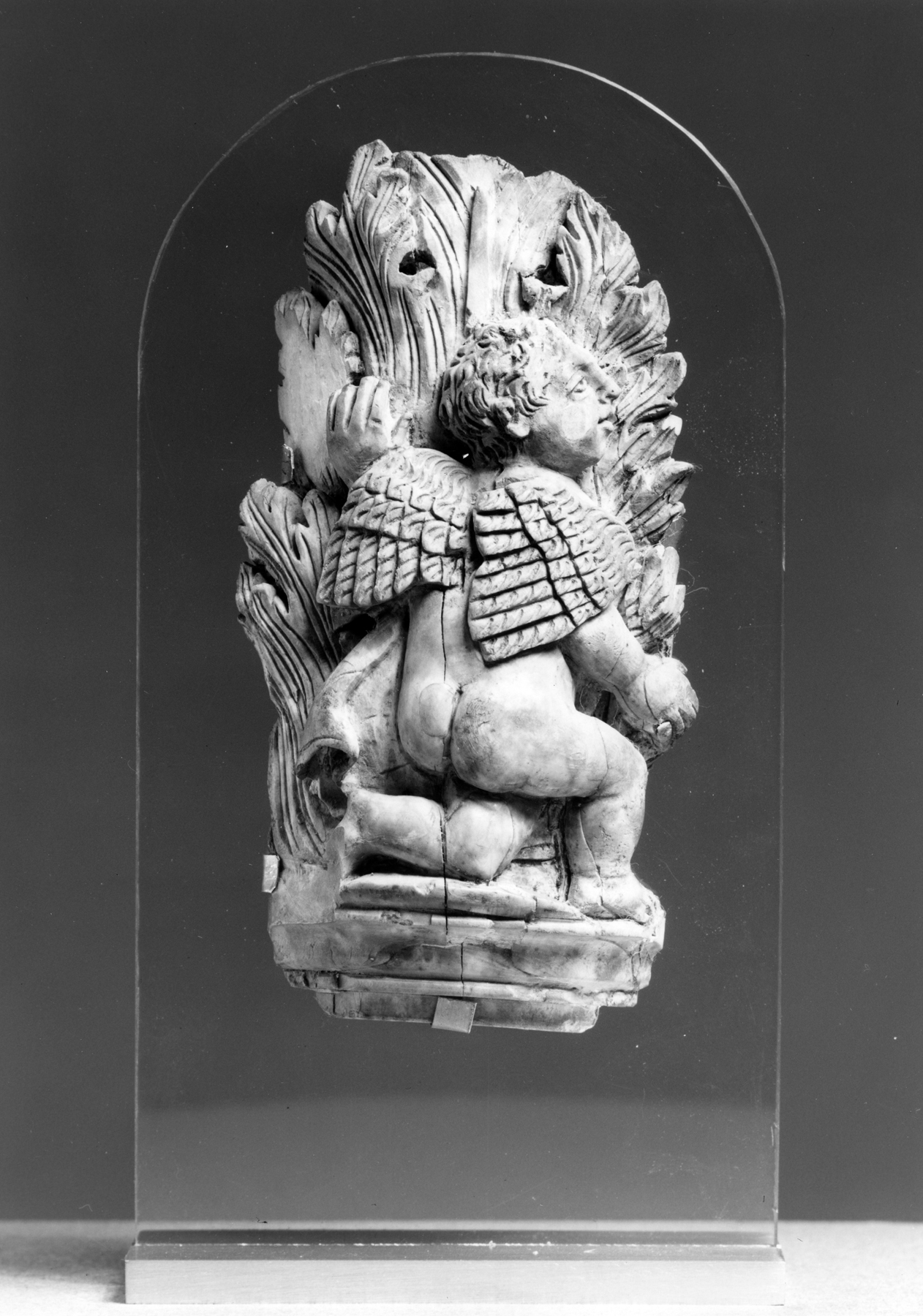Putto and Acanthus
This elaborate furniture mount is carved with a series of moldings at the bottom, and depicts a large putto set against a bank of waving acanthus leaves. The modeling of the figure is unusually fine, recalling Roman knife handles of the 4th century, with the rendering of the chubby body and face and the naturalistic treatment of the curly hair. Only the wings are stiffly handled. The acanthus is carefully rendered.
The panel is flat on the back. There are four chips in the acanthus leaves, and part of the base and the putto's left foot are chipped.
Provenance
Provenance (from the French provenir, 'to come from/forth') is the chronology of the ownership, custody, or location of a historical object. Learn more about provenance at the Walters.
Dikran Kelekian, New York and Paris [date of acquisition unknown], by purchase; Henry Walters, Baltimore, 1913, by purchase; Walters Art Museum, 1931, by bequest.
Exhibitions
| 1947 | Early Christian and Byzantine Art. Baltimore Museum of Art, Baltimore. |
Conservation
| Date | Description | Narrative |
|---|---|---|
| 1/20/1971 | Treatment | repaired; stabilized |
Geographies
Egypt (Place of Origin)
Measurements
H: 5 x W: 2 9/16 in. (12.7 x 6.5 cm)
Credit Line
Acquired by Henry Walters, 1913
Location in Museum
Not on view
Accession Number
In libraries, galleries, museums, and archives, an accession number is a unique identifier assigned to each object in the collection.
In libraries, galleries, museums, and archives, an accession number is a unique identifier assigned to each object in the collection.
71.32


